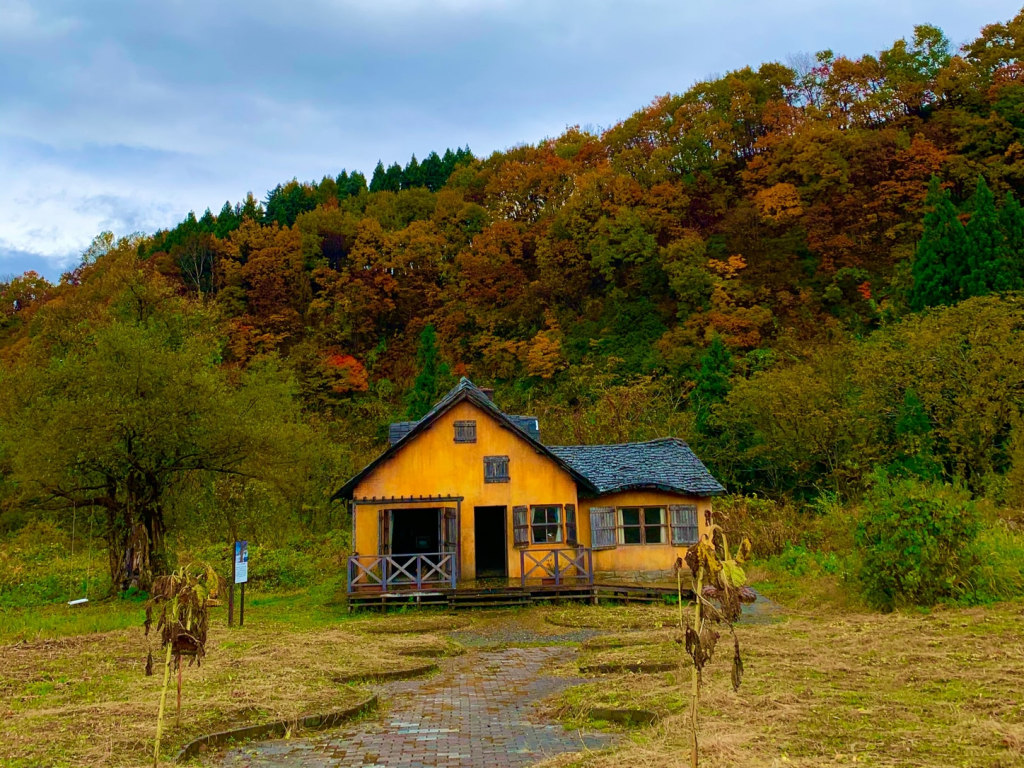Yamagata Prefecture boasts endless mountain landscapes, an abundance of terraced rice fields, 70 percent of Japan’s annual cherry yield and not a lot else. Or so the humble rural idyll would have you believe. Look closer and you will find, in the mountains of Yamagata’s northern Shonai region, Japan’s best-kept showbiz secret: Studio Sedic Shonai open set or as some like to call it — Yamagata’s Hollywood.
Studio Sedic Shonai Open Set
With a surface area of 88 hectares, Studio Sedic is the largest open film set in Japan. It is hidden in a remote valley deep in the countryside of Tsuruoka City, on the northwest coast of Yamagata. Just a short drive away is Mt. Haguro, home to Tohoku’s oldest five-story pagoda and popular pilgrimage site of the local Yamabushi monks. The studio itself is only reachable via a single, seemingly endless dirt track, which offers breathtaking views of the surrounding mountains and rice fields. At the end of this apparent road to nowhere, you will find a couple of modest wooden huts that mark the entrance to what appears to be a dilapidated mountain village.
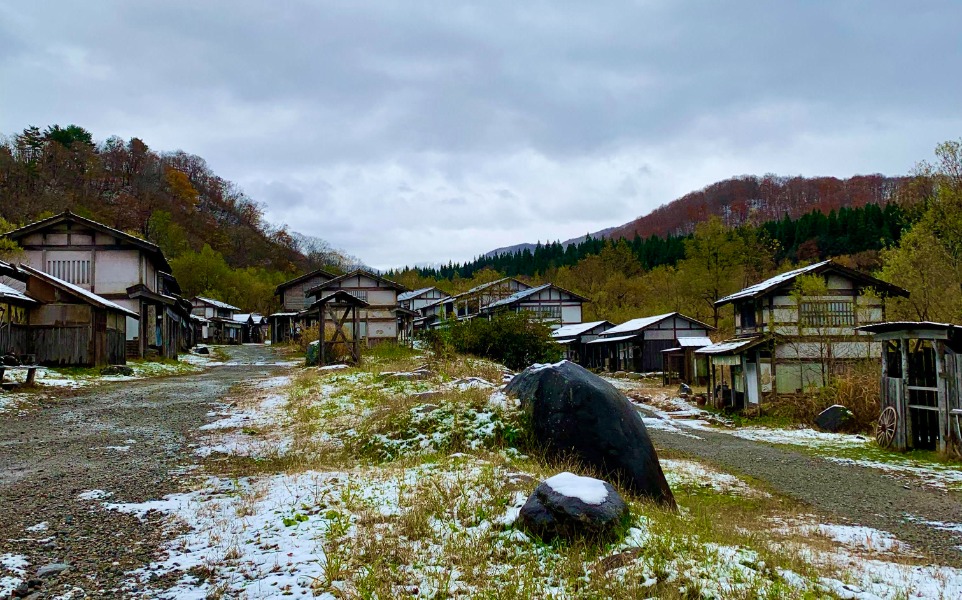
In fact, beyond these huts lie the original film sets of many of Japan’s most popular movies and TV dramas. Since its establishment in 2009, Studio Sedic has served as the filming location for numerous Japanese advertisements, TV series, and feature films. Now open to the public, the studio offers film fanatics, tourists and locals alike the opportunity to step inside the worlds of their favorite productions for the reasonable price of just ¥1,300.
An Oscar-Winning Bathhouse
Most notably, Studio Sedic is home to the set of Okuribito (also known by its English title, Departures). In 2009, it became the first ever Japanese movie to win an Academy Award for Best Foreign Language Film. Okuribito follows the story of Daigo Kobayashi, who returns to his hometown in Yamagata to try and make it as an undertaker after losing his job in Tokyo. One of the film’s most iconic scenes takes place in a public bathhouse called Tsurunoyu. Daigo visits it on his way home to cleanse himself of the day’s work and, symbolically, the social taboo that surrounds dealing with death in Japan.
Oscar award-winning sights, straight from #Tohoku https://t.co/XdlBNnIqZ6
Courtesy of one film only – the finest of Japanese classics, ‘Departures’!
Head to the @BFI Player and follow our instructions from the article to get 6 weeks of FREE Japanese goodness
©Yuza Machi#Japan pic.twitter.com/NGBFrwBBDO— Visit Japan UK (@visitjapanuk) March 22, 2021
This bathhouse is still fully equipped with the mini stools and bars of soap used during filming. Moreover, it’s the first set to greet you upon arrival at Studio Sedic. You will also find one of the original coffins used in the movie, which visitors are encouraged to clamber into to fully immerse themselves in the world of Okuribito. It may lack some of the glitz and glamour, but this bathhouse is probably the closest you will get to the thrill of an Oscar-winning movie in rural Japan.
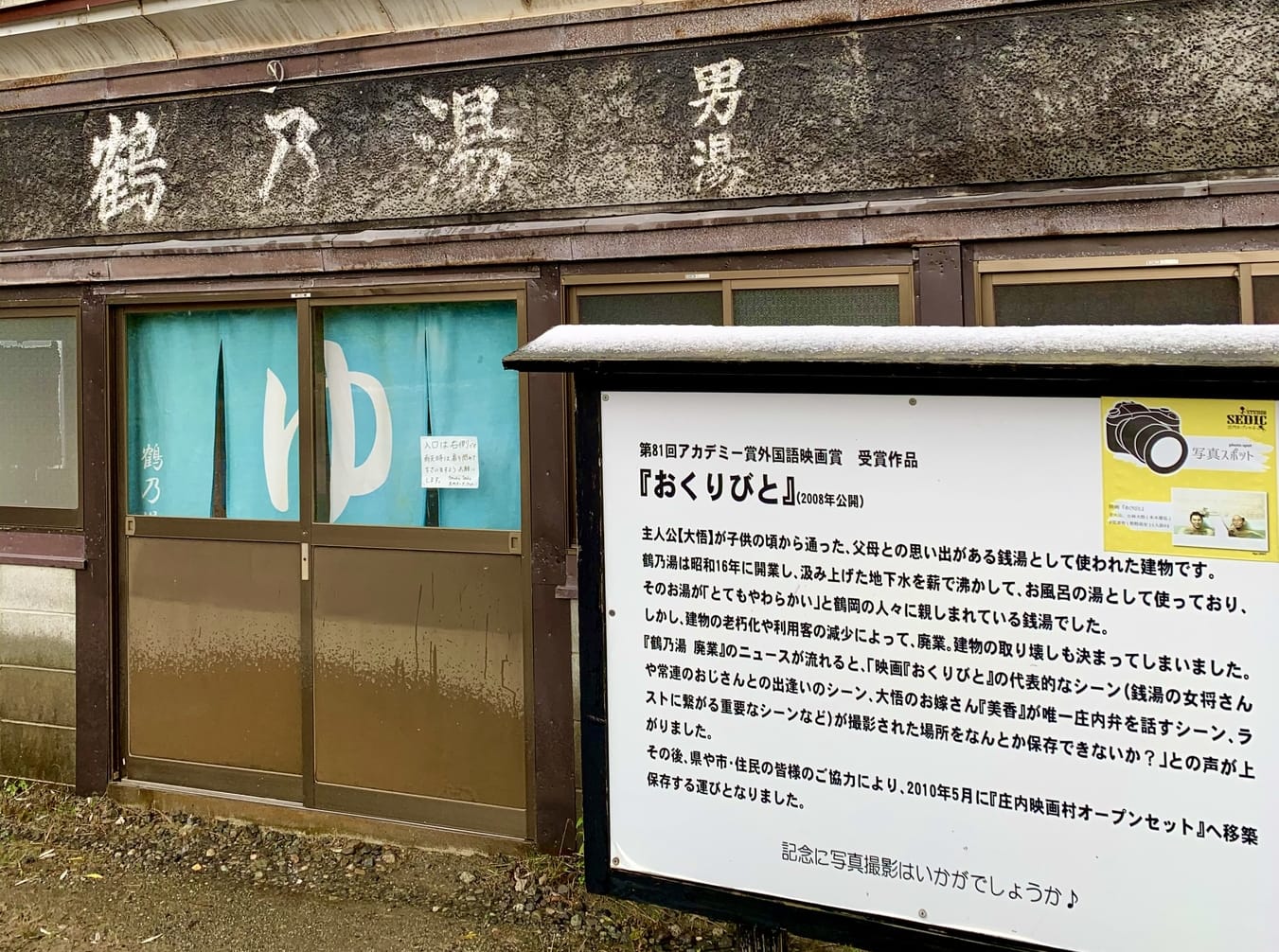
Tsurunoyu bathhouse
Take a Tour of Studio Sedic’s Six Areas
Studio Sedic’s connection to the Oscars ends with Okuribito, but this picturesque valley has been the site of many other highly popular productions. Hop on the tour bus (a day ticket costs only ¥500) and a friendly bus driver will guide you through the set’s six areas. The bus stops periodically, giving you the chance to get off and explore. Take a look at an interactive map of the areas here.
In the “Mountain Hamlet Area,” you’ll find Teppen’s House from NHK’s smash-hit drama Oshin, first aired in the early 1980s. Oshin, the Yamagata-born, ill-fated heroine of the series, is somewhat of a prefectural icon. Her childhood home, found in the “Farm Village Area,” is also one of the open set’s most popular attractions.
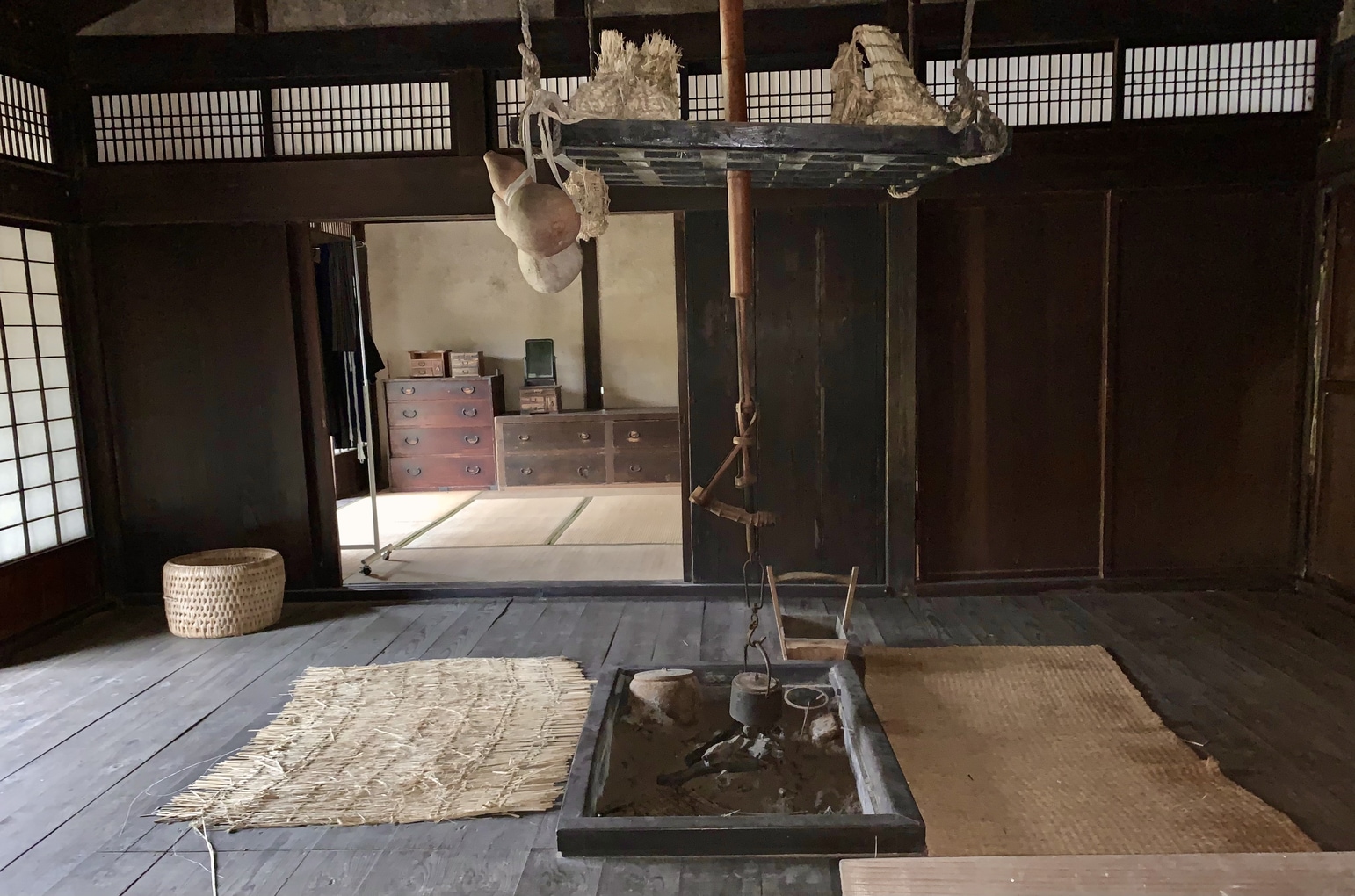
Inside Oshin’s home
From 13 Assassins to The Brave Yoshihiko
For those in search of a little more action, ride the tour bus to the “Inn Town Area.” Here you can walk the same streets as the fearless samurai warriors in the 2010 film 13 Assassins. Everything in this Edo-style samurai town — from the izakaya to the stables — has been so intricately designed that you would be forgiven for thinking that you’d been magically transported back to the 1600s. This set has been used in the making of so many samurai films, including The Magnificent Nine and Higanjima Deluxe. In one of the inns, you can even try your hand at samurai swordsmanship. There’s a game that encourages visitors to slice through a sheet of newspaper using a replica wooden sword. It might sound easy, but only the most skilled warriors will succeed.
Stay on the tour bus until the final stop and you’ll find yourself in the charming “Wind Area” which features an adorable yellow cottage from the comedy series The Brave Yoshihiko. The house includes a fully furnished, traditional kitchen and bedroom. It also has the added novelty of a vintage radio playing nostalgic jazz hits on the porch. The backdrop of the snow-capped Shonai mountains further adds to the fairy-tale atmosphere. This is the perfect place for some respite before catching the bus back to the studio’s entrance.
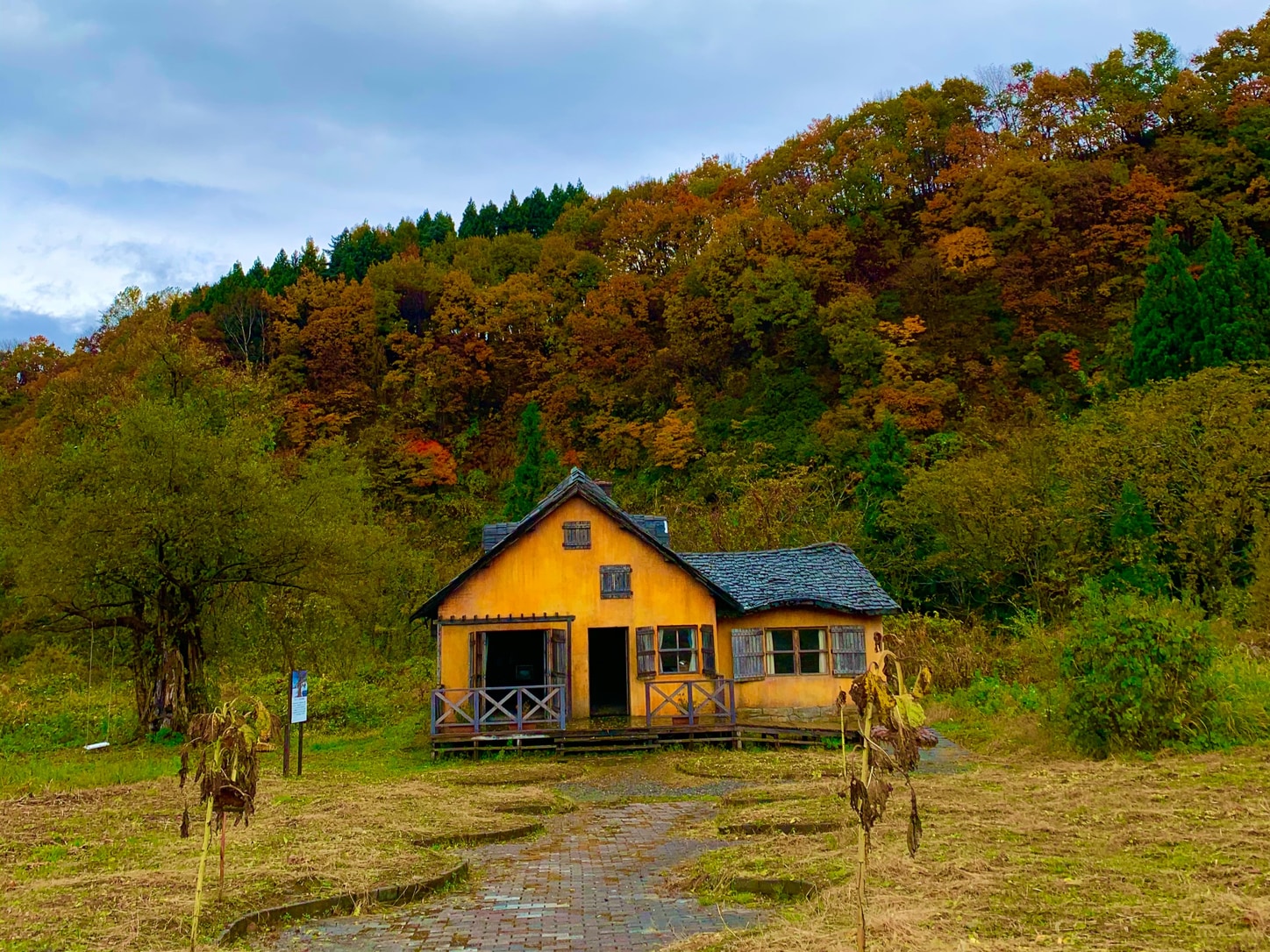
Where to Eat
In total, it takes roughly two to three hours to explore every set in Studio Sedic. Therefore, by the end of your cinematic adventure, you’ll no doubt be hungry. Snacks, such as the Yamagata delicacy tama konnyaku are available from the studio’s café.
For a full meal, try the nearby OvenKato, less than a ten-minute drive away from Studio Sedic. This rustic restaurant serves a range of homely dishes, including curry, stews and delicious lasagne, all made using local ingredients. The restaurant also doubles up as a mini gallery, so you can enjoy perusing local paintings and crafts while eating.
View this post on Instagram
How to get there
As is the case for most places in rural Japan, the simplest way to reach Studio Sedic is by car. You can easily rent a car or get a taxi ride there. A cheaper option is taking the bus from Tsuruoka Station to Ishinoyakata Sunroad Crystal Shop. From there, take a taxi.
Top image courtesy of Studio Sedic
Read more about this picturesque part of Japan:

